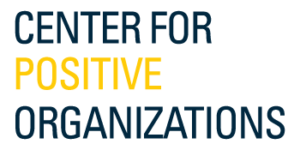Setting a strategic direction for a business school, initiating a culture change, and overcoming a massive financial deficit were challenges faced by the incoming dean of the Ross School of Business at the University of Michigan, Alison Davis-Blake. Of the four strategic pillars adopted—analytical rigor, action learning, boundarylessness, and a focus on the positive—the positive pillar was both the most controversial and the most differentiating. After experiencing dramatic success over a five-year period, Davis-Blake stepped down and a new dean was appointed, Scott DeRue. He had to determine whether to keep the positive pillar or abandon it.
Emphasizing the Positive: Forming a Strategic Identity for the Ross School of Business
by: Kim Cameron, Gretchen Spreitzer, Robert Quinn, Jandi Kelly, Jane Dutton
Core Disciplines: Leadership/Organizational Behavior, Marketing/Sales, Strategy & Management
Available Documents
Click on any button below to view the available document.
Make sure you are registered and/or logged in to our site to view product documents. Once registered & approved, faculty, staff, & course aggregators will have access to full inspection copies and teaching notes for any of our materials.
$3.95
If you need to make copies, you MUST purchase the corresponding number of permissions, and you must own a single copy of the product.
Electronic Downloads are available immediately after purchase. "Quantity" reflects the number of copies you intend to use. Unauthorized distribution of these files is prohibited pursuant to term of use of this website.
Teaching Note
This product has a teaching note available. Available only to Registered Educators. Please login to view it.
Description
Teaching Objectives
After reading and discussing the material, students should:
- Describe the benefits and challenges of developing a strategic identity, especially relative to a focus on the positive.
- Explain the advantages and disadvantages of bottom-up (emergent) and top-down change processes.
- Brainstorm how to overcome resistance to change.
- Develop strategies for maintaining momentum and commitment to organizational change.
- Make a case for the compatibility or the incompatibility of the positive pillar with the profit motive for business as espoused by Milton Friedman.

